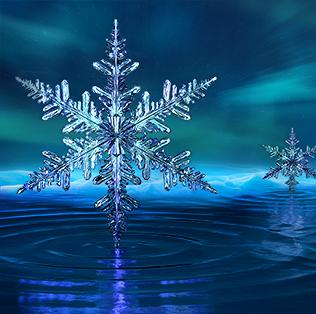The primary goal of this workshop is to build the user community by gathering a small core group of world-leading experts in the field of planetary ices, icy compounds, and water in geological processes to map out key challenges in the field. Also, this group will identify and form collaborations to conduct the most prescient neutron scattering experiments over the coming months and years and to publish this work in high-impact journals. This undertaking will make the community at large aware of the potential contributions of neutron scattering to this subject area.
Hydrogen and oxygen are the most and third-most abundant elements in the universe, respectively, and using spectrographic telescopes, the signature of their most basic diatomic molecular form, water, is found throughout the universe. In all, there are at least 17 known crystallographic structures of ice (the last three having been discovered within the last four years). Under varying conditions of pressure and temperature, a new super-ionic ice forms at Mbar pressures and ~2000 K, and at least three kinetically stable low-temperature amorphous forms of ice are known. With the addition of small hydrophobic atoms and molecules, clathrate hydrates form, which have been discovered on Saturn’s moon, Titan, and elsewhere. Water, having an electric dipole, allows the formation of the most stable crystalline forms of ferroelectric and anti-ferroelectric ordered ice at low temperature. Despite its ubiquitous nature, there are many fundamental properties that remain unknown about ice, such as the relationship of amorphous ice to deeply supercooled liquid water, the underlying stable crystalline forms that occur in the field of amorphous ice, the existence of centro-symmetric non-molecular ice X, the nature of icy compounds expected in comets and asteroids, and the structural and chemical composition of super-large water planets where temperature and pressure can vary greatly.
The molar fraction of hydrogen in water (0.6667) and the role that it plays in forming highly directional hydrogen bonds and creating the electric dipole of water molecules is key to understanding the physical properties of ice and icy compounds. The relatively large coherent scattering length of deuterium (in D2O) and the incoherent scattering length of hydrogen (in H2O) make them ideal to study using neutron scattering. In fact, the basic model of common ice I with two equally ½ occupied sites along the hydrogen bond was not settled until neutron diffraction studies in the late 1940s.

